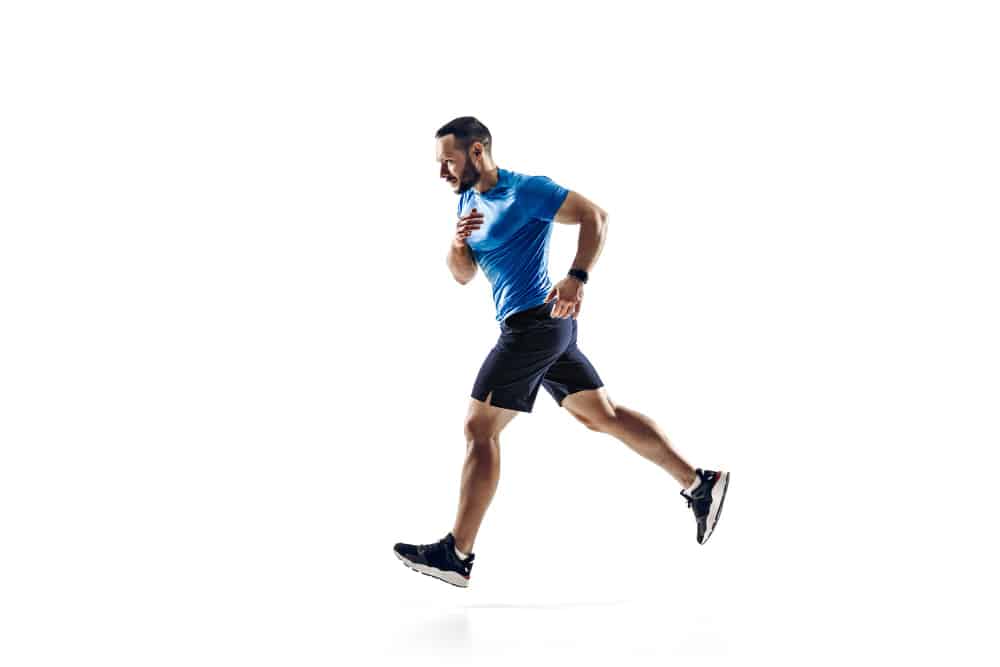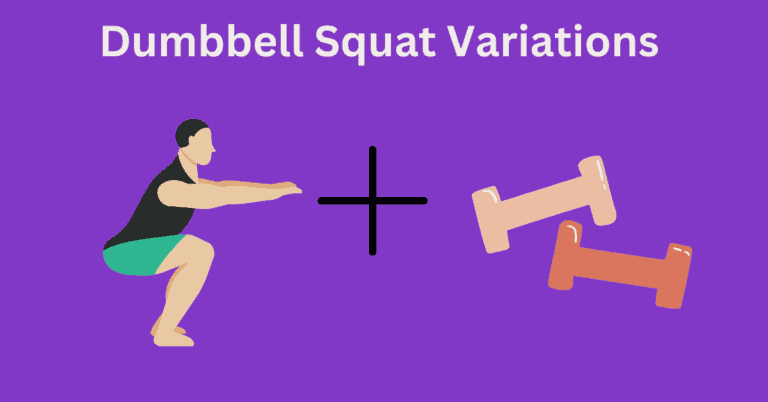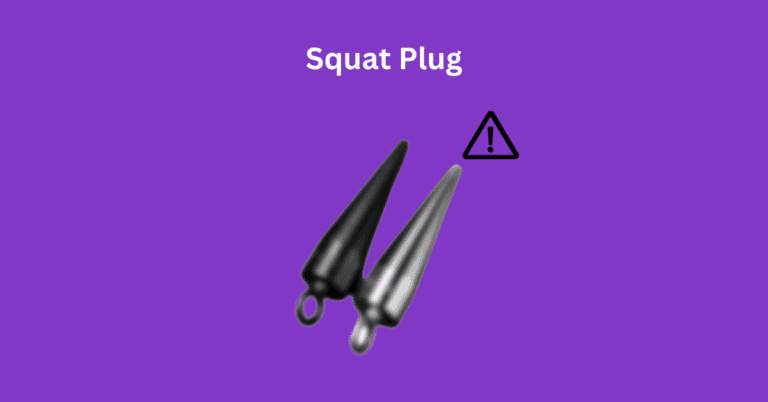Running Guide For Beginners: How To Start Safely

Running is a great form of exercise as it brings forth various benefits for your body, however many people give up before even taking that first step for the run.
The benefits do not only target physical health but mental health also such as improved memory and reduced stress level.
Running around is something we have done since we were little kids, and this makes the barrier of entry low. All you require is a pair of appropriate shoes and you are ready to go.
Now even though running is a fundamental movement, there are a few things to consider, to make it into an effective workout session~ some of them are having a good routine, correct form, and a good diet plan.
In this guide, I will go over things that you should implement which will let you get the most out of your runs.
Before starting
If you are planning on starting your running journey or have just started, it is vital to get some things correct from the beginning to imbed good habits and reduce chances of injuries. Here is a list of things to keep in mind:
Running Shoes

Having the right shoes is extremely important because essentially as you run there are forces generated that travel from your feet to your upper body.
Taking in the force continuously in the long term can cause pains & strains on your joints.
A pair of running shoes provides midsole and arch support. This cushioning feature absorbs most of the impact and protects your joints from overstraining.
The design of the shoes will also help you run faster and for a longer period, allowing you to improve quicker in a safer way.
Manageable Routine
Many people have a build-up of motivation at the start, but after a couple of sessions, it all fades away. The cause of this situation from happening can be because of their poor routine.
Rather than having a massive expectation and running till you are close to throwing up, you should revolve the workout around your fitness level.
At the start, your focus should be on interval running instead of distance and speed. What this consists of is a short period of running followed by a gentle walk.
An easy method you can try is, to run at a slow pace for a minute and walk for 4 minutes to catch your breath, then repeat. This way you can gradually increase your endurance without destroying your desire to continue.
As your body adapts to the intensity you can then increase the speed or distance of your runs.
Safe Running Route
Pre-mapping out different routes allows you to add variety to your workout. Changing the scenery from time to time keeps your workout fresh and exciting~ helping you stay consistent.
Keep in mind that you should avoid running on the road as much as possible. This is because when you start fatiguing, you can lose control over your body and accidents can occur.
If you only have an area where you need to run on the road then be sure to follow the safety road rule such as, giving way to cars, wearing a high vis at night, and slowing down at the curves of the road.
Warm Up & Cool Down
Remember to thoroughly warm up your body before every run. It is very easy to fall into the trap of ‘I will get warmed up while running’, however running with cold muscles can still increase the chance of injury.
Benefits of warming up:
- Reduce the risk of injury- the increase of blood flow primes your muscles & joints for movements.
- Increased performance– when your muscles get warmed up, oxygen can be more readily available for them, giving them the fuel needed for your run.
- Mindset- If you are already sweating a little bit and your heart is racing, it allows you to prepare mentally~ thus it will decrease the chance of you backing out of your run.
Warming is only half of the equation, the other half is your cooldowns which are just as important.
Benefits of cool down:
- Faster recovery- Waste products like lactic acid are bound to build up after the workout. Cooling down will accelerate the process of flushing out the waste products and supporting the muscles with recovery.
- Prevent dizziness- Just suddenly stopping after a run can result in your heart rate dropping too quickly. This can cause symptoms such as dizziness, light-headedness, and feeling nauseous.
- Improves flexibility- With your muscles warmed up, you will be able to hold certain stretch poses that might have been impossible beforehand. Taking advantage of this situation and stretching out will improve your flexibility over time.
Correcting Your Form

Even though running is a natural motion for us, believe it or not, there is a correct form you should be implementing to reap the maximum benefits.
Fixing up certain things like your running foot strike will prevent you from putting any unnecessary pressure on your joints, whilst allowing you to run faster and for a longer period.
In the beginning, it will feel awkward due to habits that have been rooted within you from childhood. For this reason, you might have to reduce your workload, to perfect the form. For this short-term loss, it’s worth it for the long term.
Fix Your Posture
From all the sitting we do, the upper back starts rounding and the neck starts leaning forward~ this is not the optimal stance for running. How you should be positioned instead is:
- Stand tall and straight up with a neutral pelvis
- Bring your shoulders slightly back and lengthen your neck
- Tense your core & upper back to get them engaged. This helps your body absorb the excess force generated while running.
- Keep your eyes in front of you and avoid looking down at the ground.
- As you start running there should be a slight forward lean of your upper body. This will help you balance and generate more power with each stride.
As you get tired your upper body can naturally lose its structure and the roundness of the shoulder & back will occur. This will make breathing harder which you don’t want. To prevent this try to keep your head high and slow down the pace to regroup yourself
Time Your Arm Swings
It’s common to forget about your arms and focus more on your legs when trying to fix the form, however the swings of your arms also play a major role in the quality of your runs.
Your arm swings are needed to balance out the momentum created by your legs. A study has shown that it saves you additional energy compared to keeping your arms motionless.
Here is how your arms should be positioned:
- Keep your shoulders relaxed and bend your elbows around 90 degrees
- Remember to keep your elbows close to your body rather than flaring them outwards
- Keep your fists loose as a clenched fist can create tightness in your body
- For swinging motion, focus on pushing your elbows backward and let the momentum bring them forward.
Remember everyone’s body is different, so you might have to play around with the positioning to see what feels right for you.
Foot placement
The way you hit your foot and make contact with the ground while walking does not lead to any major consequences, but it is a different story for running.
There are three categories that you will fit into~ tiptoe walker, midsole walker, and heel walker.
Problems with running on tiptoes can lead to shin splints and tight calves.
When you land on your heels your legs are straight meaning your knees will absorb a big chunk of the force. This will later lead to knee pains or injuries.
So you should be aiming to land on your midsoles, while your knees are bent. Your legs should act as a spring, propelling your body forward from each stride.
When you’re trying to change your foot placement it’s better to not run long distances or too fast. The reason is that it’s extremely easy to misplace your foot at the start when trying to change a habit, this can lead to strains and pains.
Mindset

You need to have a sturdy mindset before starting because motivation is fickle, it will fade away with time so you cannot rely on it.
You are bound to face challenges along the way. The body does not like to be in pain~ it’s our survival instinct so the brain will come up with thousands of excuses why you should skip your workout.
At this time you should still stick with your routine, as most times whenever your body is warmed up, you are more likely to go for that run.
Whatever your reason for taking up running, plaster that thought into your mind.
Here are a few tips for sticking with your routine:
Find running partner or a group
Having people that share the same goal as yours makes the run more exciting and fun. Unlike your solo runs you will feel guilty if you keep on cancelling your plans, allowing you to be held accountable for your actions.
Listen to your favourite music
Listening to that perfect playlist will improve your mood and assist with distracting you from the discomfort due to fatigue. However, if you are running on the road then you need to be extra careful as you won’t hear oncoming cars.
Regulate your plans
You might have tiring days sometimes. In this case, rather than sticking to a rigid plan of running some long distance, you should adjust your plan. Having no expectations and telling your brain you will run as far as it allows~ your body will be more willing to accept to go for the run.
Switch it up
Mix up your routine at least once per week. This can be changing location or doing the same route but backward. You can do different kinds of running such as long-distance, hill running, sprinting and interval runs.
Having these tips are great to give you that extra motivation. With that being said you are in control of your own body.
No matter the tips, your mind will come up with reasons to neglect it. You need to stay disciplined and ignore those negative thoughts to the best of your ability.
Diet & Nutrients

Having the correct food & staying hydrated is essential for repairing your muscles and fuelling your body for the next running session.
Although having a regular run every week is great, you will have a tough time progressing due to insufficient muscle recovery.
Diet
What you eat before and after the run can determine the effectiveness of the workout.
For a pre-run meal, you should aim for foods that are high in carbohydrates, low in fats & fiber, and average in protein, 1-2 hours before your run. Carbohydrate & protein is used as fuel for the body, and fats & fiber is hard to digest, so avoiding them will reduce the chance of cramps and discomfort.
You can also have a snack instead of a meal, which can be eaten 30-60 minutes prior to your run. The same concept as a meal, avoid foods that are hard to digest and that are high in carbohydrates.
After your run, it’s important to restore the lost glycogens. If you are far away from home then an energy bar or energy gel can be a great help to get the nutrients your body is looking for.
But you should always end the day with a healthy balanced diet.
Don’t fall into the misconception that burning calories means you can eat whatever you want. A bad choice can wash away all of your hard work.
Hydration
You need to pay attention to your hydration because you are losing water through your sweat.
Since we are made of 60% of water, it plays a major role in normal bodily function.
You might want to drink a cup of water 30 minutes beforehand just so you have an extra amount in your body.
If you are running for 40 minutes or longer, you should carry a handheld water bottle if there is no water available around.
A healthy estimate that you can follow is every 15 minutes you can drink 5-10 oz of water.
If the run is extreme that lasts more than an hour then it’s a good idea to replace water with a sports drink.
With sweating for a prolonged period you will lose an excessive amount of electrolytes. Sports drinks will replenish your body with the lost minerals and carbohydrates.
Conclusion
Running is an excellent form of exercise that will provide benefits to both your mind and body keeping vital organs healthy such as the heart.
Challenges will come your way as your body goes through discomfort, but as time passes by it will get easier.
As a reward after finishing your run, you will get to experience the runner’s high which is a euphoric state of mind.
So get your shoes on and have fun chasing your goals.


